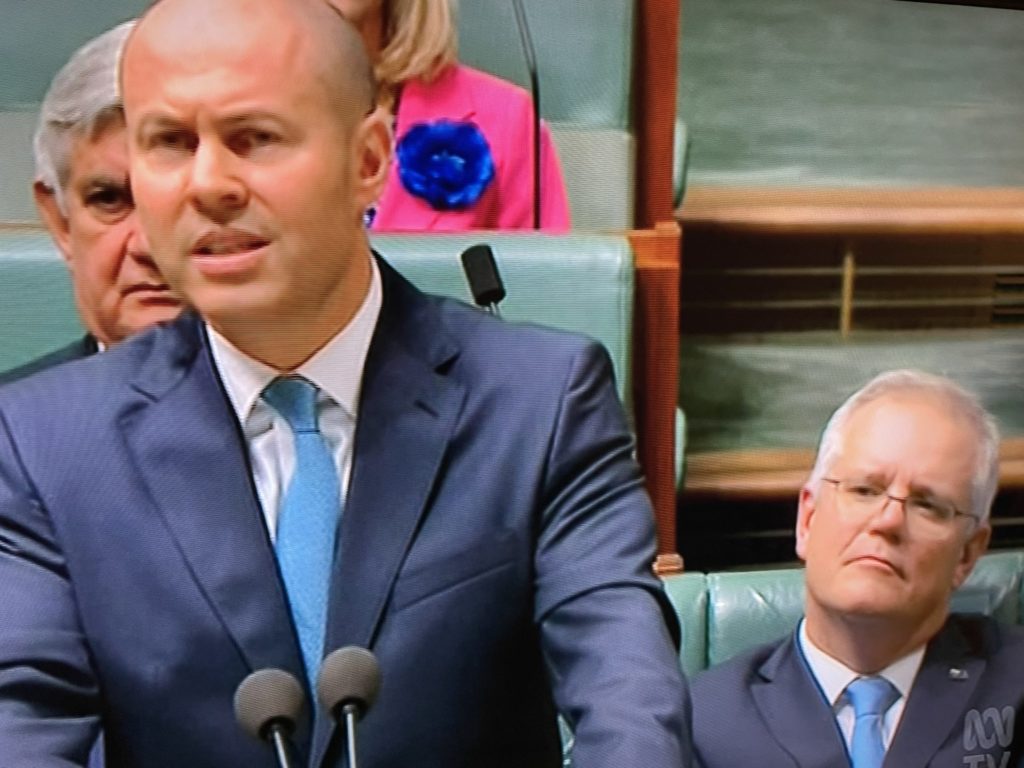It was supposed to be the Federal Budget that would change the game for women in Australia, but while the government tweaked and tinkered, they ultimately missed a crucial chance to go big and send a powerful message to voters.
Nonetheless, the government did spend big in some areas. Manufacturing, aged care and mental health services all received a healthy boost in funding.
In a bid to mitigate potential criticism around its deep pockets decision, Josh Frydenberg told the nation that Australia was “ahead of any major advanced economy” with “more Australians in work than ever before”. He touted the government’s handling of the crisis with policies like JobKeeper and suggested proposed policies were a way to guard against vulnerabilities.
He was also quick to address the giant woman-shaped elephant in the room early on in his speech, describing the ways in which women have been impacted by the pandemic, especially in terms of increasingly compromised safety.
But while there was much hyperbole dished out by the Treasurer, there frankly weren’t policies for women to match it. Here’s a recap:
Childcare:
An already announced $1.7billion childcare package was reiterated but not added too. Under the changes, the childcare subsidy for families with two or more children aged five and under will increase up to 95 per cent, up from the current 85 per cent, while the current subsidy cap of $10,560 would also be removed.
Such a policy would benefit some families with two or more children in care for at least a short period, but does nothing to address the swiftly rising costs of childcare centres. The measures will also not come into effect until July 2022, following the next election.
Domestic and family violence services:
Following months of services being stretched to breaking point amid an escalating crisis, the government committed to doubling its spending on women’s safety to $227 million annually ($680 million over three years).However, women’s safety bodies say a $1 billion per annum investment is needed to close the gaps in frontline domestic violence services.
“We’ve never really tried making domestic abuse services universally available”, says Hayley Foster, chief executive of Women’s Safety NSW. “There are currently many services which are underfunded or simply not available Australia-wide.”
“Domestic and sexual violence services are not a luxury, but an absolute necessity”, she says.
Support for care industries:
The Aged care industry will encouragingly receive some strong relief with the Treasurer announcing an $18 billion package over four years to improve the sector, including new home care packages to reduce the backlog of people wanting help to stay in their homes longer, and employ thousands more residential home staff.
Superannuation:
The government will allow the superannuation guarantee to increase to 12 per cent after toying with the idea of stopping it. Women will also likely benefit from the abolition of the $450 per month minimum income threshold, ensuring that more workers are paid super when they earn even small amounts with a single employer. It’s a modest change but could benefit women up to $11,000 in retirement savings.
The NDIS:
An additional $13.2 billion will be driven into the program across four years, supporting Australians with disability. And if you have a young child with developmental concerns or disability, $17.9 million has been set aside for early intervention support.
Education:
Some big investment commitments were announced such as $2 billion to fund preschool with reforms to improve participation as well as a $19 billion funding boost of universities.
Career development:
The Women’s Leadership and Development Program will continue with an extra $38.3 million in funding, aimed at creating new jobs, economic security, safety, and international engagement. And if you’re a woman seeking a STEM qualification? $42.4 million has been allocated to these endeavours.
And some other sweeteners:
- $376.2 million to providing legal support to women to navigate the legal system;
- $20.5 million to address sexual harassment in the workplace as a response to the Respect@Work report;
- $6 million towards the Workplace Gender Equality Agency to prevent and respond to workplace harassment;
- $26.2 million to improve the safety of online spaces for women and children;
- $16.6 million for ongoing programs covering maternal, sexual, and reproductive health;
- $5 million for women suffering pelvic pain and endometriosis;
- $13.7 million to expand the Women and Infants Research Foundation nationally (currently trialling in WA);
- More breast cancer treatments listed on the PBS;
- $10.3 million to extend the Temporary Visa Holders payment pilot for women experiencing family or domestic violence;
- $29.3 million for the safety, social inclusion and economic participation of migrant and refugee women;
- $9.3 million to prevent and respond to violence against women and girls with disability.


